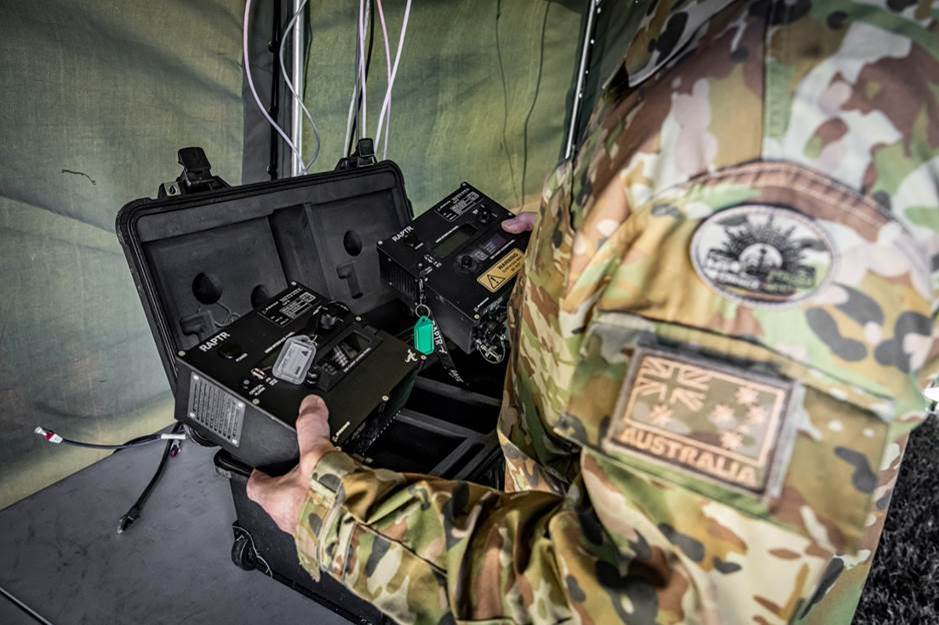
How Boeing’s New RAPTR Router Enhances Communications for Australian Soldiers
Media Release
At just 3.3 kg, Boeing’s new lightweight Rapid Tactical Router (RAPTR) is set to revolutionize the Australian Defence Force’s (ADF) communications in rugged and remote environments. Designed for small-scale deployments, this compact router weighs one-eighth of the current Integrated Battlefield Telecommunications Network (I-BTN) equipment, making it significantly more portable. Housed in a backpack-sized transit case, the RAPTR provides secure network access for both classified and unclassified domains, offering a flexible, mobile solution for military operations.
“The RAPTR allows the ADF to utilize the I-BTN in ways we hadn’t initially anticipated,” says Murray Brabrook, Boeing Defence Australia’s (BDA) Director of Joint Systems. “A single operator can now set up full connectivity in under 10 minutes, and the router’s small size means it can fit in an overhead locker, be easily transported on aircraft, and mounted onto vehicles.”
The development of the RAPTR began during the early stages of Project Currawong, driven by feedback from ADF users who needed a more lightweight and portable system. Though the RAPTR retains the capabilities introduced in the I-BTN—including rapid network connections through SATCOM, radio, VOIP, and public internet—it has been optimized for ease of transport. The system uses standard commercial interfaces like USB, Ethernet, and 4G dongles, simplifying training for operators.
While RAPTR was not part of the original LAND 2072-2B contract, Boeing developed it under the Commonwealth’s Capability Enhancement Strategy (CES). This strategy allows for continuous innovation in battlespace communications to meet evolving needs in the field. “The RAPTR is one of the first significant pieces of equipment to be developed under CES, with substantial orders already placed by both the Australian Army and the Royal Australian Air Force,” explains Tom Minge, BDA’s Battlespace Communications System Program Manager.
RAPTR’s ability to host mission system software and its lightweight design make it ideal for smaller, more agile operations, complementing the larger, more robust I-BTN systems suited to extensive deployments and harsh environments. This technology promises to enhance communication capabilities for ADF personnel, allowing them to maintain secure and reliable networks in challenging conditions.



